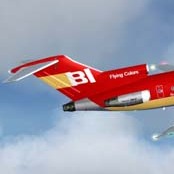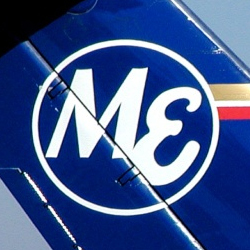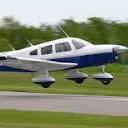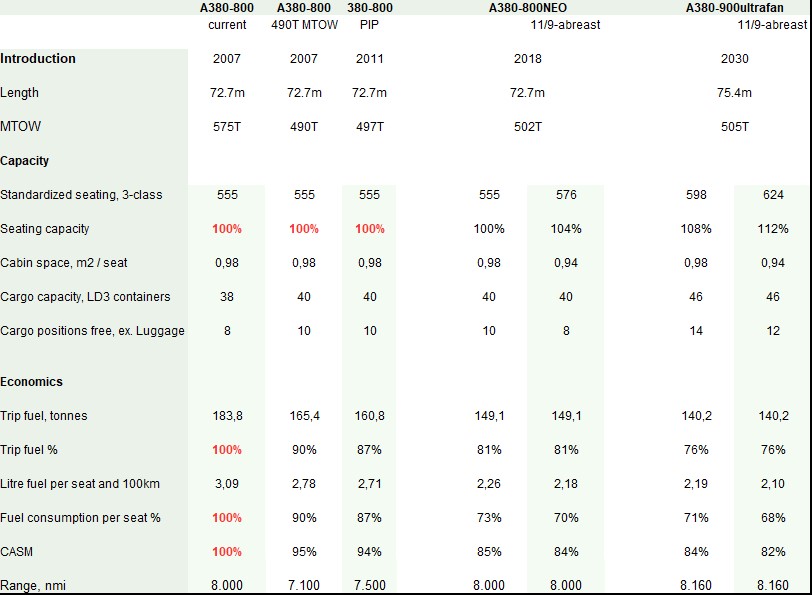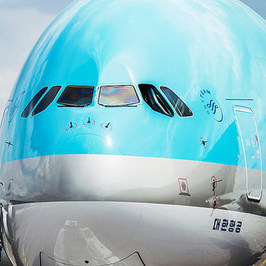The reason this thread topic keeps popping up is because the fundamental question Revelation asks up thread, has never been definitively answered by someone who knows what he’s talking about and instead we go into the usual religious/fanboyistic debate about point to point vs hub and spoke or hub to hub, twins vs. 4-haulers etc.
Could a competitive A380, with viable next generations have been built with that generation engines within a 80m box?To answer that question two main sub questions have to be asked:
1 At what CASM does the revenue potential of such an A380 start to outweigh the yield dilution and frequency drawback vs. a smaller twin?
2 What CASM could’ve been achievable for the A380 given the 80m span limitation and that (engine) generation technology?1 At what CASM does the revenue potential of such an A380 start to outweigh the yield dilution and frequency drawback of a smaller twin?This one is hard to answer, because it’s based on complex airline modelling of fleet use. What we could say is that an A380 at equal CASM to a smaller twin would always loose out to the smaller twin. Conversely, a twin at equal trip cost of a larger A380 would always loose out to the 4-hauler. The reality is that the truth is obviously somewhere in the middle, but how big the efficiency advantage of the A380 would have to be, I think is probably too complex to definitively answer in the context of a forum discussion.
2 What CASM could’ve been achievable for the A380 given the 80m span limitation and that (engine) generation technology?This question the more knowledgeable among us, like Fred can give a good indication of. We do know that the original A380 was double hampered by having so much unused potential built in:
1 The overly large wing, MLG etc, increased weight, fuel burn and thus cost.
2 This extra unneeded weight hit extra hard because it strongly increased induced drag due to the limited 80m span.
This means that if you do optimized the plane and get the weight down the economics quickly start to improve quite drastically as well.

Explanation of the columns/models in the table:
2nd column: A380-800 490T: Decription:
Engines, MLG, wings and control surfaces optimized for 500T instead of the growth option of 600T in the original A380. MLG with 16 instead of 20 wheels, not only saves weight but also frees up cargo space. The original A380 had the additional problem that it had good payload but no cargo space. With this optimized 800 payload and cargo volume are more in sync.
Trip fuel compared to original A380: -10%
CASM compared to original A380: -5%
Sales: 250
Some airliners would have required the payload range, but I think it is likely that at least an equal amount would have valued the lower CASM of this version.
3rd Column: -3% SFC engine PIP with MTOW increased to 497T:Description:
Payload range significantly expanded by the engine PIP and the MTOW increase.
Trip fuel compared to original A380: -13%
CASM compared to original A380: -6%
Sales: 100
Some follow on orders, some from customers that required payload range that the 490T plane lacked at launch.
4th Column: NEO, stretched 3 rows with plus style scimiters and MTOW increased to 502T:Description:
Simple stretch to increase fuselage geometric efficiency. SFC in relation to PIP -4%, aero efficiency -4%.
Trip fuel compared to original A380: -16%
Trip fuel per set compared to original A380: -22% (-26% for the partial 9/11-abreast configuration). For reference, the 777X is supposed to be -16% compared to the 77W.
CASM compared to original A380: -15% (-19% for the partial 9/11-abreast configuration)
Sales: 300
Most sales would’ve been follow on/replacement orders from mostly Emirates. That said, the CASM is so much lower than the original that it would have most likely impacted the overall market.
5th Column: Ultrafan with MTOW increased to 502T:Description:
With it’s 4 engines, adopting the large bypass GTF engines would’ve been much easier/cheaper on the A380 than the already huge engines on the competing twins, which would have translated into an acquisition cost advantage. SFC a conservative -8%
Trip fuel compared to original A380: -23%
Trip fuel per set compared to original A380: -29% (-32% for the partial 9/11-abreast configuration). For reference, the 777X is supposed to be -16% compared to the 77W.
CASM compared to original A380: -19% (-22% for the partial 9/11-abreast configuration)
Sales: 250?
Hard to say, many A380’s would’ve still been parked during COVID. Who knows what the appetite for such a larger airliner would be in 2030?



